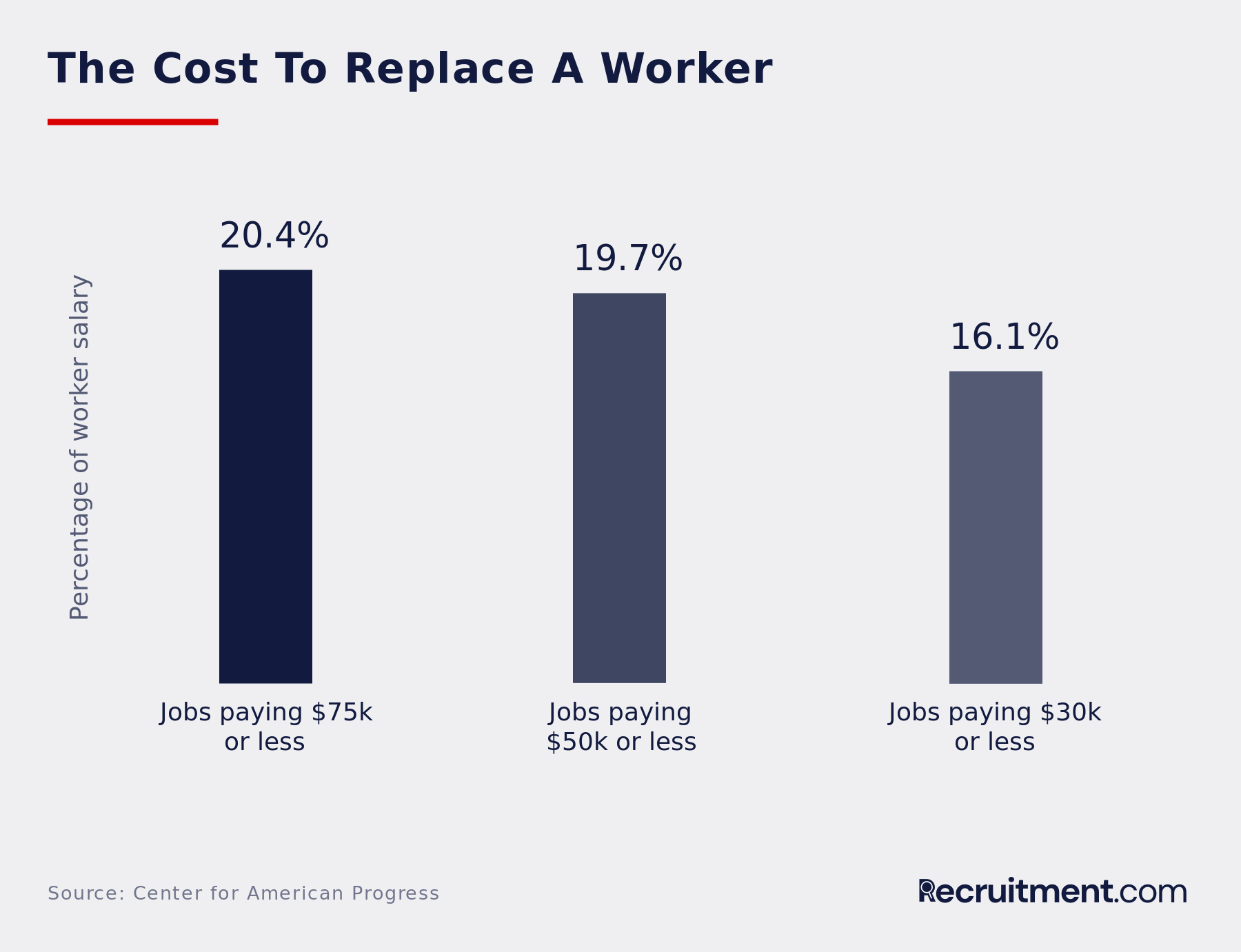How To Welcome A New Team Member

Sphoorti Bhandare has 10 years of experience writing about HR and technology.
Most employee onboarding and integration programs do not recognize the changes a new hire brings to team and company dynamics. When you welcome, guide, and check up on an employee from their first week to the first year, you pave the path for healthy, productive teamwork.
Hiring the right candidate is vital to the success of your company. No one can deny that.
Yet, this same candidate can quickly become a bad hire without the right retention strategy.
Consider this:
- Almost 20% of employees leave within 45 days of their employment.
- 50-70% of new hires — managerial and executive — fail at their job and quit within 18 months.
While there are several reasons why you may mis-hire or the candidate may leave, employee turnover is costly — for your company morale and bottom line.

Employees are the single-most crucial asset of every company. They embody your mission, goals, struggles, successes, and culture every day.
So, it is a given your employees should feel that they belong, their work matters, their voice is heard, and they are getting projects aligned with their goals.
The first step — to create such an environment — is establishing a welcoming process.
Why welcoming a new employee is important
If a new employee has to climb the mountain of rapid introductions, company policies, guidelines, administrative tasks (and inside jokes) without the help of her teammates, she can easily get the wrong impression or become discouraged.
"Asking for help is hard at the best of times...It gets harder when you don't know anyone,” explains Dominic Kent, Director of Content Marketing at Mio.
You want to create a way for healthy communication and relationships from the start.
What Are The Benefits of Welcoming A New Employee?
Improve team integration
A welcome process provides structure for both management and staff to revisit team policies and norms and make them suitable to integrate the new member with ease.
Moreover, this process helps team members scrutinize and assign equal responsibility to achieve goals as a team and support the new employee to find his or her place in the group.
Avoid factions within teams
Nothing turns off new hires more than dealing with inside jokes and references while working on projects with their peers. With a welcome process, you get to enlist existing members to develop inclusive team practices.
For example, you can mandate each person — veteran or new — has to voice their opinion on crucial group tasks during weekly meetings…even if it is only to say “I agree” or “I disagree.”
Scale employee retention
A recent BambooHR study showed 91% of employees put through a successful onboarding program felt engaged at work. And committed employees contribute to increased productivity and retention.
Through the welcoming process, you can uncover ways to keep new hires excited about work, so they are motivated to give effective customer care, find creative solutions, and develop an innovative mindset.
Offer Accepted: What Next?
To make new hires succeed as a productive team member and an individual, you should launch the welcoming process right after they accept the offer.
But, what are the immediate steps to kickstart a new hire’s integration?
- Send them a welcome note
- Introduce them on company's Slack (or a similar platform) channel
- Send a company-wide new hire announcement
- Set up their work email
- Customize their tech stack (Trello, Slack, HubSpot, Salesforce) per their job responsibilities
- Automate their HR processes
- Prepare their workspace
- Encourage existing team members to congratulate the new hire
- Involve new hires in team communications relevant to their future projects
- Schedule a one-on-one casual meeting with their manager before the start date
- Organize team-building activities and in-person meetings with team members
- Nominate a colleague to give a tour of the office
- Set up reminders to follow up with the new hire regularly
Lastly, give a warm “Welcome to the team!” shout-out on their first day.
These steps will push the new employee to talk, engage, and build relationships with team members even before he steps in the office. This way, he will transition from a new hire to a full-fledged team member, without ringing the “outsider” alarm.

How Do Other Companies Welcome Employees?
A systematic employee welcoming program is not uncommon. In addition to the steps mentioned above, many enterprises, like Cisco, L’Oréal, Zappos, Facebook, and Buffer, take it even further to make new employee integration a core cultural effort.
For example, Zappos requires all new employees to go through a four-week customer service training program and offers up to $4000 to anyone who does not see a cultural fit post-completion and wants to quit.
L’Oréal provides a gamified app which hosts resources, quizzes, and missions to help the new hire understand and embody company culture.
Buffer assigns three buddies — leader, role, and culture buddy — to onboard the new member.
And Warby Parker sends a welcome package containing information on company culture and where it is going, personal notes, and first-day, first-week, and first-month work agenda.
Note: You will need intentional planning and support of your colleagues or better, the onboarding or welcoming committee to complete these tasks.
What other methods can you use to integrate a new employee in a team?
Think about team communication styles
Suppose you hire a candidate for his different background or skillset…expecting he will share his insights with the new team. Except, current staff may think it is premature for him to comment on the team’s efforts and dismiss his inputs.
This can discourage the new hire and sour team dynamics. The solution lies in promoting team-wide communication norms.
You can start by introducing the new hire to the team and explaining:
- What value they bring
- Why they are joining the team
- How they will contribute
- How team members can help them early on
All employees will then be on the same page and feel excited to set up communication measures that work for everyone. Additionally, you can emphasize listening to the new person in meetings. You can follow up, get more details, or break down their thoughts to identify action items the team can pursue.
Create a culture fit
Culture plays a huge role in improving employee retention. And the welcoming process is a great way to train the new hire on cultural etiquette — including acceptable behavior and attitude — while updating conscious, inclusive efforts.
The first step is to explain the company’s mission, vision, values, and goals and how they are tied to her responsibilities. You can even give examples of how employees represent company values.
Learning about their employer’s journey through struggles, milestones, and lessons can make new employees more receptive and involved at work.
It should not just be about the company though. Find out the hobbies, personality traits, expectations of the new hire and share it with staff as conversation pointers to start building a meaningful relationship with her.
Note: You can give new employees a creative gift — tied to the company’s story, city, industry, or culture. For example, a happy hour coupon from an employees-favorite bar.
Individual attention
More often than not, managers assume new hires can figure things out on their own once they join the team. This could not be more untrue.
Think for a minute. An employee has to adapt to new surroundings, people, rules in a few weeks while getting things done. And, if he does not interact with management regularly, he can easily start to doubt his decisions or work within the team. This insecurity can lead to lower morale and ultimately, mediocre performance.
Although teams are the building blocks of any given company, individual attention is just as vital. Without it, new hires can feel unmotivated, undervalued, or isolated, especially in a big company.
Individual attention, however, does not start and stop at the praise. It involves one-on-one dialogues that cover anything from work issues, assignments, feedback, personal goals, to work-life balance.
You can start small. First, get the management on-board. Then, review their schedule to fix quick meetings (for example, during lunch, client visits, elevator rides). A five-minute personal meeting is enough to make employees feel appreciated and heard.
Individual attention lets managers guide employees more closely, showing they care about their subordinates as much as the work they do.
Assign mentors
A new job can be overwhelming for anyone. And without established human connections, it can become unbearable.
The best solution here is to connect new employees with work friends (“buddies”) or mentors. These buddies or mentors can guide new members through the maze of company customs — including unspoken ones — and goals in an informal, non-intimidating setting.
Mentors also have great benefits on employee retention and even increased salary for those that have been mentored.
This system will also let the new member develop real relationships that live beyond meeting rooms and shared space.
But there are a few things to remember before you proceed.
First, assign colleagues or other department members for these roles, since hired persons may be uncomfortable having casual talks with managers they report to.
Second, provide proper training and explicit instructions on what a mentor or work friend can or cannot do. Such precautions stop any misinformation or bad behavior from passing onto the new hire.

Setting an evaluation process
Continuous evaluation is critical to not only assess the success of new employees but your onboarding process as well.
On the one hand, you can measure new hires’ performance, responsibilities, expectations, metrics to see their contribution to the company’s bottom line.
On the other, you facilitate genuine feedback on the welcoming process by talking about their first impressions, what works for them (or not), how they are adapting to the company culture and values, improvements they want to see, what they love/dread about the job.
What To Include In The Welcome Letter
Welcome note for a new employee sets the tone for what it is like to work at your company. So, it is necessary to not only use encouraging, inclusive words, but also give details — in a link, attachment, or written form — new employees should know, like:
- Reporting time
- Dress code
- First-day agenda and expectations
- Company ID procurement
- Company policies
- Employee benefits
- Onboarding process
- Log-in credentials
- Summary of upcoming projects
- People to meet
A new employee announcement is another way direct managers can welcome a person to the team and inform the existing employees.
And if you already know a thing or two about the hired individual, you can add it in your announcement to make it easy for others to start an authentic dialogue with their new colleague.
Your announcement can contain the following information for better integration:
- Employee’s full name
- Personal information (hobby, favorite band, nickname, etc.)
- Assigned team and designation
- Tentative list of future projects
Conclusion: Welcoming Is A Team Effort
Sue Duris, CMO at DC Biosciences, says it the best, "Things need to be re-engineered so we start with the employee, then the customer, then the product or service. That is what drives success."
Onboarding new employees is a team effort. And your welcoming process should continuously change to reflect that.
Work with your peers and supervisors to build a culture that thrives on collective mindset and efforts to help employees "grow in whichever direction that works for them," states Duris.
If you show you care about them, they will do the same for you.
- How does your company welcome new employees?
- Do you use the welcoming process to improve employee retention and satisfaction?

Sphoorti Bhandare has 10 years of experience writing about HR and technology.






